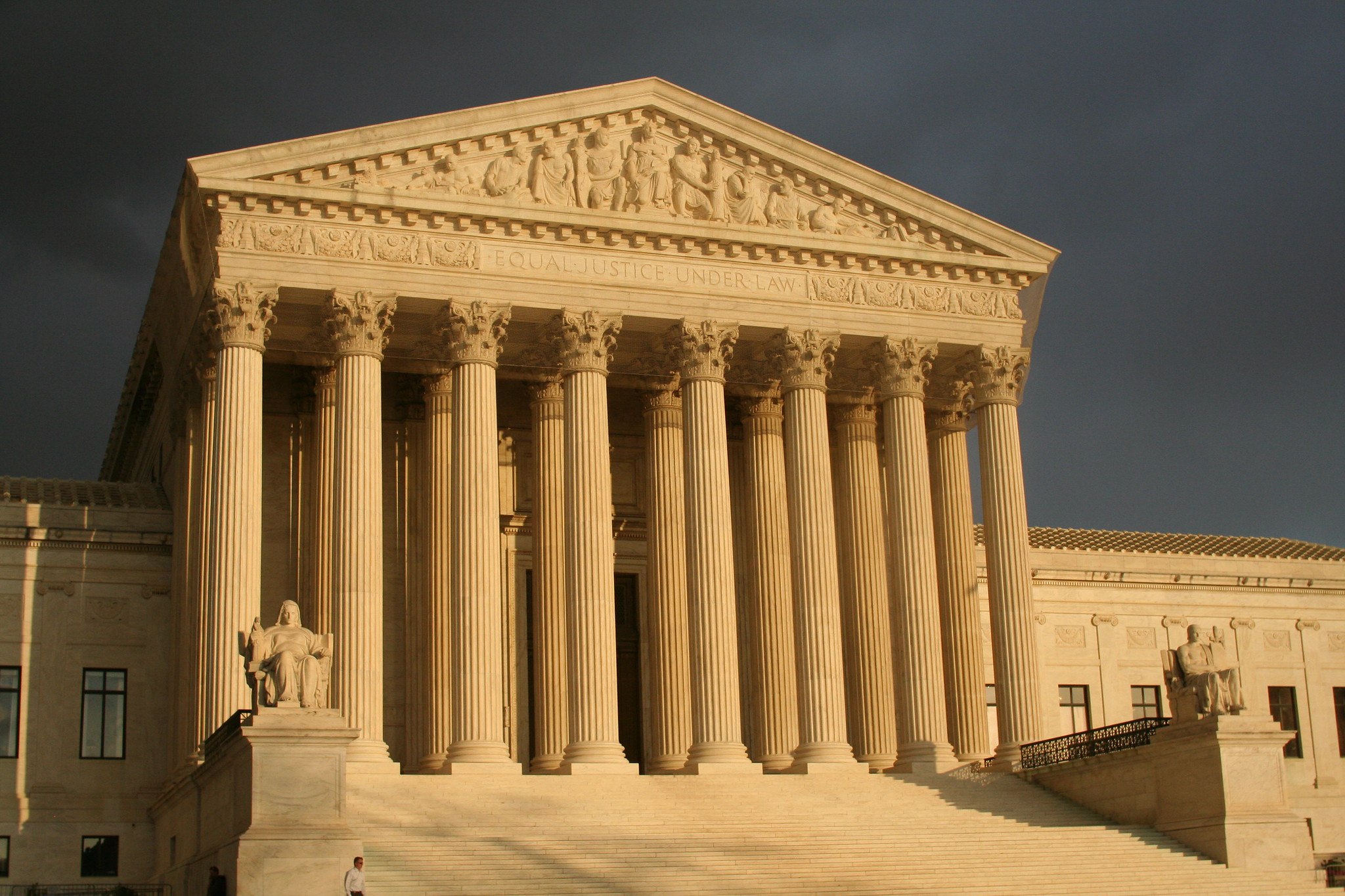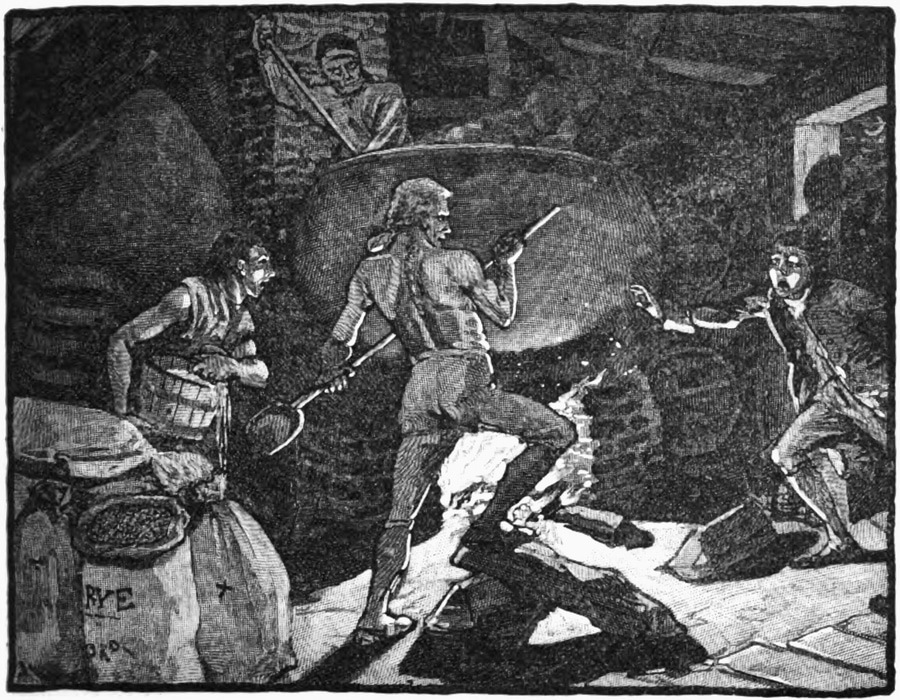Rahimi, Second Amendment Originalism, and the Disarming of Loyalists During the American Revolution
Founding-era laws disarmed many deemed dangerous by the state, providing a historical basis for the statute at issue in Rahimi.

Published by The Lawfare Institute
in Cooperation With

Recently, the Supreme Court heard arguments in its latest blockbuster Second Amendment case, United States v. Rahimi, and we now wait to learn whether the Court will strike down as unconstitutional federal legislation criminalizing possession of firearms by persons subject to certain state court-issued domestic violence protective orders. As the Court decides the case, it will confront a potentially consequential piece of American history in its analysis—namely, whether the many laws enacted during the Revolutionary War disarming those “disaffected to the American cause”—that is, “loyalists”—support upholding the law at issue in Rahimi, 18 U.S.C. § 922(g)(8). It is therefore fair to say that some of this country’s earliest national security laws lie at the heart of the case.
The government relies heavily on such laws as concrete historical precedent for the statute at issue, while Rahimi’s lawyer contends those Founding-era laws are irrelevant because, the argument goes, loyalists fell outside the political community. As demonstrated below, the latter position is simply wrong. Instead, the Founding generation came to view those disaffected to the American cause as very much falling within the political community—a problem that occasioned a host of legislative reactions all centered on protecting the national security of the newly independent and fledgling state. On close study, the laws at issue, targeting such persons and stripping them of any right to bear arms based on general legislative assertions of their dangerousness, lend strong support to upholding the law at issue in Rahimi.
Some background is in order. In its 2022 decision in New York State Rifle & Pistol Association v. Bruen, the Court, with Justice Clarence Thomas writing, posited that determining whether a regulation of firearms violates the Second Amendment turns on whether there exists a “representative historical analogue” demonstrating that the modern regulation would have been acceptable to the Founding generation. In so doing, Bruen disclaimed the need to identify “a historical twin” nearly identical to the modern law under scrutiny. Thus, the Court said, “even if a modern-day regulation is not a dead ringer for historical precursors, it still may be analogous enough to pass constitutional muster.” The key inquiry, Thomas stated, is “whether modern and historical regulations impose a comparable burden on the right of armed self-defense and whether that burden is comparably justified.”
Setting aside the larger debate over the wisdom of defining constitutional meaning in 2023 based on what a mere subsection of the many who today compose “We the People” thought in 1791, if the Court adheres to Thomas’s backward-looking approach in Bruen, Rahimi’s outcome likely will turn on two related inquiries: first, what kind of firearms regulations existed during the Founding period, and second, whether the Court believes any of the examples is sufficiently analogous to § 922(g)(8) to support its constitutionality (a conclusion that will depend in turn upon how tight-fitting the Court demands a “representative” analogue to be in its analysis). Answering such questions correctly requires establishing an accurate record of historical practice related to Founding-era firearm regulation.
That is where laws disarming loyalists come in. The government argues in Rahimi that “Congress may disarm persons subject to protective orders even if the Founders did not” by citing a range of laws targeting those deemed “dangerous,” not “law abiding,” or both. As the government puts it in its opening brief, “From the earliest days of the Republic to modern times ... , legislatures have disarmed individuals who could not be trusted with firearms. Different legislatures have disarmed different groups at different times: loyalists and rebels in the 18th century; underage individuals and persons of unsound mind in the 19th century; and felons, drug addicts, and domestic abusers in the 20th century.” For good measure, the government also points to similar laws in the English legal tradition.
There is no question that loyalists who supported the British in the Revolutionary War posed an enormous threat to the national security of the new state, and that is why many states responded aggressively to that threat. Massachusetts’s Act of March 14, 1776, cited by the government, is emblematic of many such laws:
Whereas on the fourteenth of March One Thousand Seven Hundred and Seventy-five, a certain resolve was made and passed by the American Congress, of the following tenor, viz. “Resolved, That it be recommended to the several Assemblies, Conventions and Councils, or Committees of Safety of the United Colonies, immediately to cause all persons to be disarmed within their respective Colonies, who are notoriously disaffected to the cause of America, or who have not associated and refuse to associate to defend by arms these United Colonies, against the hostile attempts of the British Fleets and Armies; and to apply the arms taken from such persons in each respective Colony, in the first place, to the arming of the Continental Troops raised in said Colony ….[”] Be it therefore enacted that ... every male person above sixteen years of age, resident in any town or place in this colony, who shall neglect or refuse to subscribe a printed or written declaration of the form and tenor herein after prescribed ... shall be disarmed and have taken from him in manner hereafter directed, all such arms, ammunities and warlike implements, as by the strictest search can be found in his possession or belonging to him[.]
The many laws from this period were not only sweeping; they likewise often adopted streamlined processes for disarming those believed to pose a danger to the state—a point worth noting in light of some of the justices’ apparent interest in the due process afforded individuals in state protective order proceedings that trigger application of § 922(g)(8). On this score, a 1779 Pennsylvania law is a good example, providing:
the lieutenant or any sub lieutenant of the militia of any county or place within this state, shall be, and is hereby empowered to disarm any person or persons who shall not have taken any oath or affirmation of allegiance to this or any other state and against whom information on oath shall be given before any justice of the peace, that such person is suspected to be disaffected to the independence of this state, and shall take from every such person any cannon, mortar, or other piece of ordinance, or any blunderbuss, wall piece, musket, fusee, carbine or pistols, or other fire arms, or any hand gun; and any sword, cutlass, bayonet, pike or other warlike weapon, out of any building, house or place belonging to such person.
But Rahimi contends that, first, Bruen demands a much tighter fit between any example from the Founding period (when, to state the obvious, combating domestic violence was not a legislative priority) and § 922(g)(8), and, second, regardless, Founding-era laws targeting loyalists do not count. Indeed, the latter point is so central to Rahimi’s case that his lawyer opened his oral argument before the Court by attacking the government’s reliance on such laws. Specifically, he argued, “loyalist laws are entirely off the analogical spectrum here because loyalists were also pervasively deprived of all of the rights of the people and citizenship.” Along the same lines, Rahimi’s brief posits that “Revolution-era laws and practices targeting loyalists are also unreliable analogues. Loyalists were not members of the new American political community[.]” For its part, the government did not seek to disabuse the Court of this assertion in either its reply brief or oral argument.
Rahimi’s historical claim is simply wrong. To be sure, here, as elsewhere, history is messy. But as the Revolutionary War unfolded, the dominant understanding viewed those disaffected to the American cause as squarely within the political community of rights-bearing members.
Let us turn to some of the messiness. As I detail in Chapter 4 of my book “Habeas Corpus in Wartime: From the Tower of London to Guantanamo Bay,” in early 1776, the Continental Congress declared that “those who refuse to defend their country should be excluded from its protection.” “Their country” to which the proclamation referred was of course “the United Colonies,” not Great Britain. One might read this declaration as casting out the disaffected from the political community.
By June 1776, however, the Congress declared that “all persons abiding within any of the United Colonies, and deriving protection from the laws of the same, owe allegiance to the said laws.” This new allegiance came with not only “the protection from the laws” but also the same obligation of loyalty as it had under English law. It followed in the Congress’s view “[t]hat all persons ... owing allegiance to any of the United Colonies ... who shall levy war against any of the said colonies within the same, or be adherent to the king of Great Britain, or others the enemies of the said colonies, or any of them ... giving to him or them aid and comfort, are guilty of treason against such colony[.]” Treason had a very specific meaning at the Founding, modeled on the long-standing conception of the same in Anglo-American jurisprudence. Only someone deemed to owe allegiance who therefore fell within the political community could commit treason. As Thomas Paine explained at the time in his widely circulated pamphlet “Common Sense”: “A line of distinction should be drawn between English soldiers taken in battle, and American inhabitants taken in arms. The first are prisoners, but the latter traitors. The one forfeits his liberty, the other his head.” Thus, from early on and at the behest of the Continental Congress, the newly independent states treated Redcoats as prisoners of war and enemy aliens. The “disaffected,” by contrast, were traitors—which meant they had both the rights and the obligations of those owing allegiance.
Ever hyper-focused on the national security of the new country, the Continental Congress’s June resolution also “recommended to the legislatures of the several United Colonies” that they “pass laws for punishing ... any of the treasons before described.” Many states responded quickly by condemning and punishing as traitors those who violated their obligation of allegiance to the new states. Such laws separated out “prisoners of war” to be treated otherwise, in keeping with longstanding Anglo-American jurisprudence. North Carolina’s 1777 treason statute is a good example, declaring that “all and every Person and Persons (Prisoners of War excepted) now inhabiting or residing within the limits of the State of North-Carolina or who shall voluntarily come into the same hereafter to inhabit or reside do owe and shall pay Allegiance to the State of North Carolina,” before going on to subject all such persons to punishment for treason for a whole range of acts lending support to the British cause—spanning from “tak[ing] a Commission or Commissions from the King of Great Britain” to passing along intelligence to the British. Such statutes were drawn in sweeping terms because those sympathetic to the Crown were everywhere and hard to differentiate from those loyal to the movement for independence. (Indeed, loyalists took up arms with the enemy, traded with the same, shared intelligence, housed spies, joined acts of sabotage, and did any number of other things that, as law professor Philip Hamburger has said, “today might be called ‘terrorism.’”)
Many states went even further. Seeking to stamp out treason before it happened, states passed laws disarming loyalists, and in some cases, legislatures also deprived such persons of other rights as well. And, where conditions were especially fraught in certain battleground states, legislatures enacted laws that suspended habeas corpus to legalize the detention of the disaffected outside the criminal process. Those laws speak volumes regarding the political status of the disaffected at the Founding.
As English legal tradition had taught the Americans, absent a suspension of the rights associated with habeas (and specifically associated with the English Habeas Corpus Act of 1679, which guaranteed a timely trial—even to suspected traitors), persons who could claim the protection of domestic law enjoyed the right to full criminal process. This is why the British suspended habeas on English soil to legalize the detention there of American “Rebels” (as they called the Americans) during the Revolutionary War. And this is why no fewer than six states enacted suspensions during the war to legalize the military detention of those disaffected to the American cause. Whichever side of the Atlantic, had the individuals in question been deemed to fall outside the political community, there would be no need for a suspension—such persons would have been treated as prisoners of war. Indeed, once the British conceded American independence, Parliament allowed its long-standing suspension to lapse and declared that remaining Americans detained on British soil were no longer Rebels but prisoners of war who should now look to the law of nations for legal protection.
Pennsylvania’s 1777 suspension—by both its terms and its backstory—underscore how this model worked. The act provided that “it shall and may be lawful” for the state’s executive and council:
[T]o arrest any person or persons within this commonwealth who shall be suspected from any of his or her acts, writings, speeches, conversations, travels or other behavior, to be disaffected to the community of this or all or any of the United States of America, or to be a harbinger of the common enemy who is at our gates, or to give mediate or immediate intelligence and warning to their commanders ... or by discouraging people from taking up arms for the defense of their country.
Pennsylvania’s suspension likewise empowered the executive “to confine” such persons, to banish them, or to demand that they subscribe an “oath or affirmation of allegiance and fidelity to [the] state.” And, by its terms, the act prohibited judges from “issu[ing] or allow[ing] any writ of habeas corpus ... to obstruct the proceedings of the said executive council.”
The law resulted from a series of extraordinary events that teed up the very question of the political status of the disaffected. Specifically, in response to the Continental Congress’s declaration that some Quakers were “disaffected to the American cause,” Pennsylvania had arrested several Quaker leaders. When the Quakers sought their freedom via habeas petitions, the government took the position that they had renounced “all the privileges of citizenship” because they had failed to take oaths of allegiance. This failure, Pennsylvania argued, rendered the Quakers outside the protection of domestic law such that they could be held without charges like other prisoners of war. When the matter came before the Pennsylvania Supreme Court, Chief Justice Thomas McKean disagreed. He concluded that the Quakers enjoyed full rights of citizenship and therefore held their confinement without charges was unlawful in the absence of a suspension. The Pennsylvania Assembly responded swiftly by adopting the above suspension.
Maryland, South Carolina, New Jersey, Virginia, and Massachusetts enacted similar suspensions during the war, all of which legalized the detention outside the criminal process of those “whose enlargement within this state is dangerous thereto” (Massachusetts’s phrasing in its 1777 suspension).
This understanding also informed how the Continental Congress conceived of the disloyal. To borrow one prominent example, when the Congress empowered General George Washington in the winter of 1776-1777 “to arrest and confine persons who ... are otherwise disaffected to the American cause,” it ordered him to “return to the states of which they are citizens, their names, and the nature of their offences, together with the witnesses to prove them”— presumably so that such persons could be tried on criminal charges in the ordinary course.
The critical point is this: None of these laws would have been necessary if the disaffected fell outside the political community. Indeed, if that had been the case, loyalists would not have enjoyed the protections of domestic law and as such could have been treated as prisoners of war like the British Redcoats. Nor would they have been liable for treason. But as early American laws governing treason and the Revolutionary War suspensions demonstrate, that was not how the Founding generation conceived of the disaffected: They were deemed to owe allegiance and therefore fell within the political community.
* * *
The Supreme Court’s current Second Amendment jurisprudence is fixated on the Founding period. Assuming that holds in Rahimi, it is important that the Court understand the full context of that historical period and how the disaffected were viewed at the time. If the Court looks for a “representative historical analogue” supporting the idea that dangerous persons may be disarmed for the security of the state or analogous reasons, it just may find what it seeks in the many laws that disarmed those “disaffected to the American cause” during the Revolutionary War.

.jpg?sfvrsn=8253205e_5)


